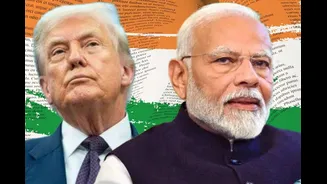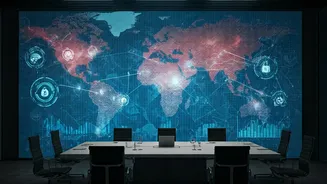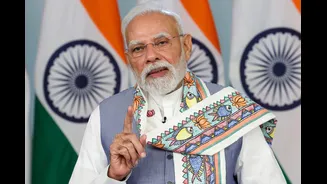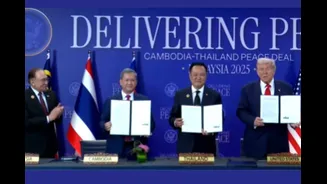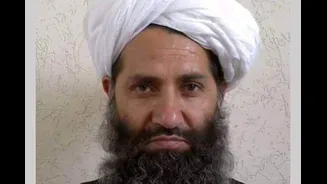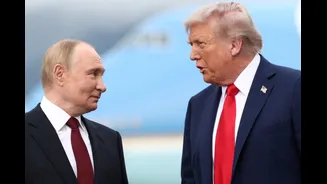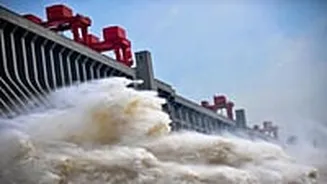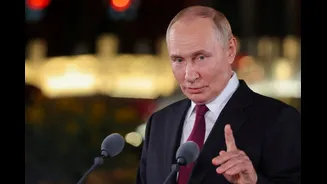This June, President Donald Trump had invited Prime Minister Narendra Modi to stop over in the United States while returning from Canada, but Modi declined.
The US then invited Modi to the Sharm el-Sheikh
Summit this month to celebrate Trump’s achievement of ending the Israel-Palestine war. He declined, and sent a junior minister.
Trump is now at the ASEAN Summit in Malaysia, where Modi decided not to go but rather attend it virtually. It is only the second time in a decade that he has skipped the ASEAN.
And in November, the Prime Minister will travel to Johannesburg in South Africa for the G20 Summit. But the US President has already said he will not be attending the event.
Both leaders are not likely to meet in person for almost a year now since their February meeting in Washington DC — to some, it looks strange. There is no word yet on the Quad summit scheduling as well.
Once hailed as a high-profile “bromance” between two strongman leaders, the relationship between Modi and Trump has entered a curious phase of diplomatic distance.
Meetings are fewer. Lately, there have been three phone calls between them but no clear deliverables. Public messaging is effusive — with Modi praising Trump’s peace efforts and the latter calling him a “good friend” — but beneath the layers, it seems strained.
Why are they avoiding each other — or at least appear to be doing so?
Back in 2019-2020 the Modi-Trump relationship was very visible. Events such as the massive ‘Howdy Modi!’ rally in Houston and the ‘Namaste Trump’ event in India signalled a warm public optics of friendship.
The two leaders talked big: expanding India-US trade, defence cooperation, energy deals. For India, Trump was a partner as New Delhi sought to elevate its global role; for the US, India was a key strategic partner in the Indo-Pacific region.
When Trump became the President earlier this year, Modi paid him a visit in February. Both leaders vowed to meet in India next for the Quad Summit. But come May, the cracks began to show.
Trump claimed he had stopped the India-Pakistan war after India launched ‘Operation Sindoor’ after the Pahalgam attack. Modi publicly denied this. By June, the relationship began to strain — those cracks are now widening.
Why has the situation come to this? Several factors have contributed.
Trade and tariffs: The US under Trump pushed hard on trade imbalances. India faces 50 percent tariffs and pressure to succumb to US entry into India’s agriculture and dairy sectors. Modi has said India will not compromise.
Energy and Russia: India continues to buy significant Russian oil; the US demands reductions making this a point of collision. For instance, the Indian foreign ministry rejected a claim by Trump that India will cut Russian oil to “almost nothing”.
Diplomatic optics: Both leaders have domestic bases that expect strength rather than retreat.
Strategic autonomy vs alignment: India emphasises its right to chart its own course, sometimes called de-hyphenation, and not seen as simply aligning with the US.
These elements conspire to make a warm, easy relationship – harder. Now, the key question — why does it look like Modi is avoiding Trump (or perhaps vice-versa)? Let’s explore main reasons:
Avoiding public embarrassment or mismatch in expectations. For example, for the upcoming 47th ASEAN Summit in Kuala Lumpur, Modi chose to attend virtually rather than in person — widely interpreted as avoiding a face-to-face with Trump. The US President in fact, while travelling to Malaysia aboard Air Force One, again repeated his claims regarding the Indo-Pakistan ceasefire and India’s purchases of Russian oil.
Indian officials have denied a phone call Trump claimed to have had with Modi regarding Russian oil. That kind of public contradiction undermines the optics of a friendly relationship.
Modi is clear and wants to show his base that India will not bow to external pressure. Meeting Trump with visible signs of compliance could be politically awkward. India prefers muscular optics.
Similarly, Trump thrives on the image of being in control; if a meeting does not give him a visible “win”, he may be less keen.
By not being overly eager to meet Trump, India preserves leverage. If Modi meets too readily, it could look like India is capitulating.
Meanwhile, the tough trade and energy posture by the US suggests India might want to avoid being boxed in.
Relationships between leaders often extend beyond policy to personal dynamics. Official explanations (like a schedule conflict) may mask more deliberate signalling.
For example, Modi declined a US invitation to go to Sharm el-Sheikh citing schedule, but analysts see deeper diplomatic signalling.
That event turned into a rather comical “praise-fest” for Trump showing that arguably it was better in hindsight for the Modi to skip it.
Trump called Pakistan Prime Minister Shahbaz Sharif on stage to speak in Sharm el-Sheikh where Sharif indulged in rather public flattery, which went beyond praise under diplomatic protocols.
Sharif even recommended Trump again for the Nobel Peace Prize. Trump also asked Sharif on the stage whether India and Pakistan will “live very nicely together” while Sharif yet again thanked Trump for ending the India-Pakistan conflict earlier this May.
This would have been a rather discomforting scenario for the PM, who has consistently told Trump that the US had no role in the ceasefire struck between India and Pakistan during Operation Sindoor. Modi’s presence in Sharm el-Sheikh event could have meant him hearing Trump’s incorrect claims in person.
In short: avoiding a meeting may be less about not wanting to meet, and more about not wanting to meet under unfavourable optics. By staying aloof, India may retain flexibility; the US may reset its approach rather than rely purely on personal chemistry.
Modi not going to ASEAN indicates there is still some work to go in sealing the India-US trade deal. India continues to face 50 percent tariffs from the US — and Trump continues making unsubstantiated claims regarding India.
Commerce Minister Piyush Goyal has said India will not rush into a trade agreement with a gun to its head. He said trade deals are to be viewed as long-term partnerships based on mutual trust. His comments signal India’s desire to retain strategic autonomy.
The language used — “not in a hurry”, “no deal with a gun to our head” — is a diplomatic marker: India is balancing between making a deal and not appearing to capitulate.
Looking ahead, there are two broad scenarios:
Scenario A – Reset and Re-engagement
If both leaders decide the relationship is too strategic to leave adrift, we might see a reboot: a meeting, followed by a trade or defence announcement, and a reset of optics.
Scenario B – Continued Drift and Functional Diplomacy
Alternatively, the personal warmth may remain subdued, but functional cooperation continues via ministries and agencies rather than leader-to-leader fanfare. India may further diversify its partnerships — with Russia, China, and BRICS – while retaining stable US ties, but avoiding dependence on one leader’s chemistry.
The takeaway is that leadership chemistry matters but is not everything. The institutions, trade frameworks, strategic frameworks matter even if the summit selfie is absent.
In summary: The appearance of avoidance by Modi and Trump reflects a complex mix of trade friction, energy politics, strategic autonomy, prestige, and diplomatic signalling.
It does not mean the India-US relationship is collapsing — but it does mean that the easy optics of a personal ‘bromance’ are gone for now, replaced by a more cautious, transactional dynamic.
Watch both the headline – did they meet? – and the subtext – why did they or didn’t they? The answer often lies not in what was said, but in what was not said.
